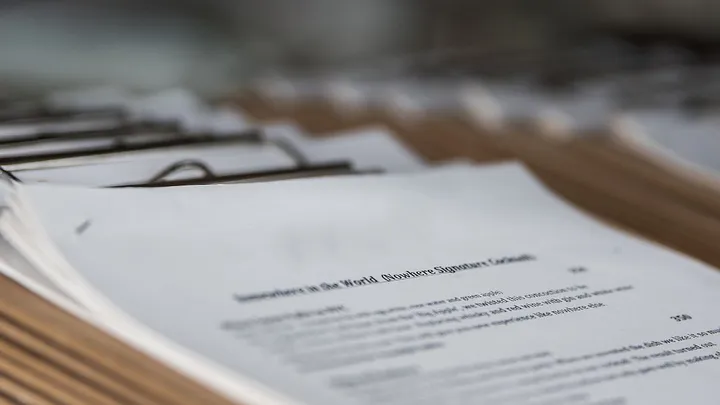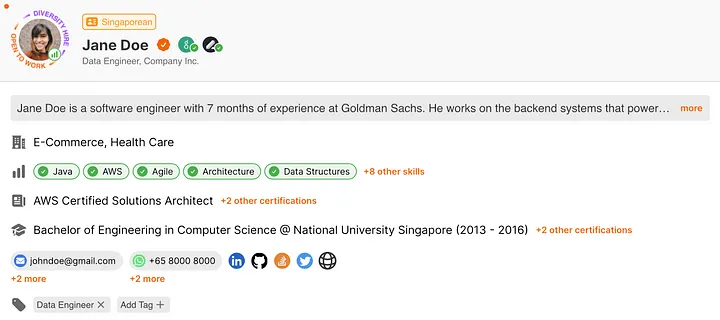Time to Fill and Time to Hire are metrics that help organisations measure how effective and efficient their recruitment process is. The two recruiting metrics can provide recruiters, Talent Acquisition and Human Resource teams with valuable insights into the duration of their recruitment efforts, and subsequently identify and overcome weaknesses in their hiring strategy.

As these metrics are so important and tracked by almost every recruiter, this article will delve deeper into the definitions and formula of Time to Fill and Time to Hire. It will also explain what factors affect these metrics and what organisations can do to cut down and significantly improve on Time to Fill and Time to Hire.
What is Time to Fill? Definition and Formula
Time to Fill is defined as the amount of time required for an organisation to fill a position. This is measured as the number of days between the moment a job requisition — a formal request to hire a new employee in a specific role — is approved and the moment a candidate accepts the offer.
Here’s the formula to calculate Time to Fill:
Time to Fill = Date of Offer Acceptance (-) Date of Job Requisition Approval
This calculation of the number of calendar days typically excludes weekends and public holidays.
You can also calculate the average Time to Fill by adding up the total number of days it takes to fill up all specified roles, and dividing that by the number of roles.
For example, if Company X is hiring for three software engineering roles, each with 20-, 30- and 40-day Time to Fill respectively, the average Time to Fill is (20 + 30 + 40)/3 = 30 days.

Time to Fill is an important metric because it tells organisations how long it takes to fill a job opening, indicating how efficient that organisation’s recruitment operations are.
If organisations find that their Time to Fill is too long, they may want to consider breaking down each part of the recruitment process into its different stages to find where the bottlenecks are, allowing them to devise a more targeted solution to optimise for the less efficient stages rather than execute a full overhaul of the entire recruitment process.
What is a decent Time to Fill metric to aim for? According to a report by SHRM, the average time to fill across all industries and companies of all sizes is 36 days, with this number reaching as low as 20 days among the top 25%. If you can hit the 20-day mark or lower, then you have a top-tier recruitment process.
What is Time to Hire? Definition and Formula
Time to Hire is defined as the number of days between a new hire entering the pipeline, to the point when he/she accepts the job offer.
Here is how you calculate Time to Hire:
Time to Hire = Date of Offer Acceptance (-) Date Candidate Entered Pipeline
As an example, if your new hire accepted your offer on Day 43, and he/she entered your recruitment pipeline on Day 3, it means that the Time to Hire is 43–3 = 40 days.
It is an important metric because it indicates how quickly you found your best candidate and moved them along the various stages of recruitment, such as assessments, rounds of interviews, background checks, and extending the official offer.
Just like Time to Fill, the average Time to Hire can also be calculated by adding up the total amount of time to hire for the specified roles, and dividing it among the total number of jobs.
The average Time to Hire can vary from industry to industry, but with the best talent getting snatched up by employers in as quick as 10 days, it is to the organisation’s advantage to act fast in order not to miss out on the best candidates.
Higher rates of time-to-hire may be a result of many factors, such as an overly complicated assessment and interview process, a lack of recruiters to meet the overwhelming number of job applicants, or even the issue of receiving a lack of relevant and qualified applicants.
Time to Fill vs. Time to Hire
These two metrics may be mistaken for each other, but both provide different insights into your recruitment strategy. Neither one is better than the other — you should use the one that ranks higher in importance.

Time to Fill is a broader metric that shows how efficient an organisation is in their hiring, and how much time it takes from the moment a job is approved to the moment an offer is extended. It covers the entire recruitment process from the pre-recruitment stage to the offer stage.
Time to Hire shows how lengthy the candidate experience is, and a higher Time to Hire can indicate a worse candidate experience because of the long-drawn hiring process by the hiring manager or company.
How to Reduce Time to Fill and Time to Hire
To improve your Time to Fill and Time to Hire, look at your existing recruitment cycle and identify where your organisation’s recruitment strategy falls short. The goal is to optimize the recruitment funnel and move candidates along the recruitment pipeline.
Here are more tips that can help push down your Time to Fill and Time to Hire:
1. Simplifying the Application Process
Filter out irrelevant and unqualified applicants with proper candidate screening and assessment, especially if you are hiring for a more technical role.
Organisations can also be transparent about the job’s remuneration by writing it clearly in the job description, therefore attracting candidates with matching pay expectations and reducing candidate dropouts later in the hiring process.
2. Streamlining the Interview Process
Another problem some organisations may face is having a lengthy interview process consisting of multiple rounds, which may result in candidate dropouts. Candidates understand they may have to meet with more than one hiring manager (especially in bigger companies), but consider cutting down the number of interviews, or conducting panel interviews where a candidate can meet all key stakeholders at once.

Besides this, organisations can garner candidate feedback to get a sense of where they are falling short in their hiring process, which affects the candidate’s experience.
3. Automating your Recruitment
There are plenty of HRTech tools in the market that use the latest technology to make recruitment processes a lot more efficient. From interview-scheduling tools to automated candidate screening and assessments, to AI-powered talent sourcing engines, automating parts of recruitment can significantly reduce human error and cut down on the time completing these time-intensive tasks, reducing Time to Fill and Time to Hire.

One of these tools is Scout, an AI-powered talent sourcing tool that lets recruiters and TA teams find the best and most relevant candidates in less than 1 minute. This allows them to cut down on their sourcing time by at least 50%, thus lowering Time to Fill and Time to Hire.
Start reducing your Time to Fill and Time to Hire today with a FREE 14-day trial of Scout.
Conclusion
Time to Fill and Time to Hire are key metrics that are tracked by organisations of all sizes as they provide insights into how efficient and effective their recruitment process is.
By reducing Time to Fill and Time to Hire, organisations hire faster, reduce the candidate dropout rates, and provide a more satisfactory candidate experience. Organisations can do this by streamlining the different parts of their recruitment cycle, while also leveraging on technology to automate the time-intensive stages of their recruitment operations.
